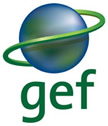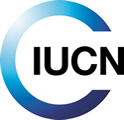Climate change vulnerability assessments
The boundaries and names shown, and the designations used on this
map do not imply official endorsement or acceptance by the United
Nations or IUCN
Name
Djoudj
WDPA ID
68151
Country
SEN
IUCN category
Not Applicable
Species vulnerable to climate change
According to Traits-based Vulnerability Assessments (TVAs)
| Vulnerable Species | Total Species | ||
|---|---|---|---|
| Amphibian |
1
|
6
|
|
| Bird |
44
|
317
|
|
| Mammal |
5
|
43
|
|
| Total | 50 |
366 |
13 % of bird, amphibian, and mammal species assessed are considered vulnerable to climate change
Expected species turnover
According to Species Distribution Models (SDMs)
Percentage of species turnover: Median (95% Confidence Interval)
| by 2010-2039 | by 2040-2069 | ||
|---|---|---|---|
| Bird |
|
|
|
| Mammal |
|
|
|
| Amphibian |
|
|
Vulnerable species
| Name | Order | Exposure by 2010-2039 by 2040-2069 |
IUCN Red List category | Sensitivity to climate change |
Adaptability to climate change |
|---|---|---|---|---|---|
| Caprimulgus europaeus | Caprimulgiformes |
|
LC |
|
|
| Falco peregrinus | Falconiformes |
|
LC |
|
|
| Himantopus himantopus | Charadriiformes |
|
LC |
|
|
| Lybius vieilloti | Piciformes |
|
LC |
|
|
| Pelecanus onocrotalus | Pelecaniformes |
|
LC |
|
|
| Tringa totanus | Charadriiformes |
|
LC |
|
|
| Chelictinia riocourii | Falconiformes |
|
LC |
|
|
| Ciconia nigra | Ciconiiformes |
|
LC |
|
|
| Numenius arquata | Charadriiformes |
|
NT |
|
|
| Rhinopomastus aterrimus | Coraciiformes |
|
LC |
|
|
| Apus apus | Apodiformes |
|
LC |
|
|
| Circus macrourus | Falconiformes |
|
NT |
|
|
| Falco subbuteo | Falconiformes |
|
LC |
|
|
| Ortyxelos meiffrenii | Gruiformes |
|
LC |
|
|
| Anas acuta | Anseriformes |
|
LC |
|
|
| Apus pallidus | Apodiformes |
|
LC |
|
|
| Bucorvus abyssinicus | Coraciiformes |
|
LC |
|
|
| Circus pygargus | Falconiformes |
|
LC |
|
|
| Hieraaetus pennatus | Falconiformes |
|
LC |
|
|
| Lymnocryptes minimus | Charadriiformes |
|
LC |
|
|
| Tringa erythropus | Charadriiformes |
|
LC |
|
|
| Upupa epops | Coraciiformes |
|
LC |
|
|
| Circaetus beaudouini | Falconiformes |
|
VU |
|
|
| Circus aeruginosus | Falconiformes |
|
LC |
|
|
| Neophron percnopterus | Falconiformes |
|
EN |
|
|
| Aythya nyroca | Anseriformes |
|
NT |
|
|
| Streptopelia turtur | Columbiformes |
|
LC |
|
|
| Struthio camelus | Struthioniformes |
|
LC |
|
|
| Recurvirostra avosetta | Charadriiformes |
|
LC |
|
|
| Ardeotis arabs | Gruiformes |
|
NT |
|
|
| Streptopelia roseogrisea | Columbiformes |
|
LC |
|
|
| Gyps fulvus | Falconiformes |
|
LC |
|
|
| Pernis apivorus | Falconiformes |
|
LC |
|
|
| Buteo buteo | Falconiformes |
|
LC |
|
|
| Haematopus ostralegus | Charadriiformes |
|
LC |
|
|
| Larus ridibundus | Charadriiformes |
|
LC |
|
|
| Calidris alpina | Charadriiformes |
|
LC |
|
|
| Passer domesticus | Passeriformes |
|
LC |
|
|
| Corvus ruficollis | Passeriformes |
|
LC |
|
|
| Cursorius cursor | Charadriiformes |
|
LC |
|
|
| Turdoides fulva | Passeriformes |
|
LC |
|
|
| Fulica atra | Gruiformes |
|
LC |
|
|
| Caprimulgus eximius | Caprimulgiformes |
|
LC |
|
|
| Caprimulgus aegyptius | Caprimulgiformes |
|
LC |
|
|
The full description of the methodology used for this assessment can be downloaded here: Traits-based Vulnerability Assessments
Expected changes in climate suitability
| Name | By 2010-2039 | By 2040-2069 | |
|---|---|---|---|
| Falco alopex | INC |
INC |
|
| Ortyxelos meiffrenii | NO CHANGE |
DEC |
|
| Accipiter erythropus | INC |
NO CHANGE |
|
| Elminia longicauda | INC |
NO CHANGE |
|
| Telacanthura ussheri | NO CHANGE |
NO CHANGE |
|
| Tauraco persa | INC |
NO CHANGE |
|
| Campethera nivosa | NO CHANGE |
NO CHANGE |
|
| Camaroptera chloronota | INC |
NO CHANGE |
|
| Glareola nuchalis | INC |
NO CHANGE |
|
| Lamprotornis splendidus | INC |
INC |
|
| Bubo ascalaphus | INC |
INC |
|
| Gyps rueppellii | NO CHANGE |
DEC |
|
| Lybius dubius | INC |
INC |
|
| Tigriornis leucolopha | INC |
INC |
|
| Accipiter melanoleucus | INC |
INC |
|
| Acrocephalus rufescens | INC |
INC |
|
| Alaemon alaudipes | INC |
INC |
|
| Ammomanes cinctura | INC |
NO CHANGE |
|
| Ammomanes deserti | INC |
INC |
|
| Anas hottentota | NO CHANGE |
NO CHANGE |
|
| Anas sparsa | INC |
NO CHANGE |
|
| Anastomus lamelligerus | INC |
INC |
|
| Anthus similis | INC |
INC |
|
| Apalis flavida | INC |
NO CHANGE |
|
| Aquila rapax | NO CHANGE |
NO CHANGE |
|
| Asio capensis | INC |
NO CHANGE |
|
| Bradornis pallidus | INC |
INC |
|
| Bubo africanus | NO CHANGE |
DEC |
|
| Campephaga phoenicea | NO CHANGE |
INC |
|
| Centropus grillii | NO CHANGE |
INC |
|
| Charadrius forbesi | INC |
NO CHANGE |
|
| Charadrius marginatus | INC |
INC |
|
| Chlorocichla flavicollis | INC |
INC |
|
| Chrysococcyx cupreus | NO CHANGE |
NO CHANGE |
|
| Chrysococcyx klaas | INC |
INC |
|
| Ciconia episcopus | INC |
INC |
|
| Cinnyricinclus leucogaster | INC |
INC |
|
| Cisticola cantans | INC |
INC |
|
| Cisticola erythrops | INC |
INC |
|
| Cisticola rufus | INC |
INC |
|
| Coracias cyanogaster | INC |
INC |
|
| Cossypha albicapilla | INC |
INC |
|
| Cossypha niveicapilla | INC |
INC |
|
| Coturnix delegorguei | NO CHANGE |
INC |
|
| Crecopsis egregia | INC |
INC |
|
| Cuculus clamosus | INC |
INC |
|
| Dendrocopos obsoletus | INC |
INC |
|
| Dendropicos fuscescens | INC |
INC |
|
| Dryoscopus gambensis | INC |
INC |
|
| Emberiza affinis | INC |
INC |
|
| Emberiza flaviventris | INC |
INC |
|
| Emberiza striolata | INC |
INC |
|
| Eremalauda dunni | INC |
NO CHANGE |
|
| Erythropygia galactotes | INC |
INC |
|
| Estrilda melpoda | INC |
INC |
|
| Eupodotis melanogaster | INC |
INC |
|
| Eurystomus glaucurus | INC |
INC |
|
| Falco cuvierii | INC |
INC |
|
| Francolinus albogularis | INC |
INC |
|
| Gorsachius leuconotus | INC |
INC |
|
| Gypohierax angolensis | INC |
INC |
|
| Halcyon malimbica | INC |
NO CHANGE |
|
| Heliolais erythropterus | INC |
NO CHANGE |
|
| Hieraaetus spilogaster | INC |
INC |
|
| Hippolais pallida | INC |
INC |
|
| Hirundo abyssinica | INC |
INC |
|
| Hirundo aethiopica | INC |
INC |
|
| Hirundo fuligula | INC |
NO CHANGE |
|
| Hirundo leucosoma | INC |
NO CHANGE |
|
| Hirundo lucida | INC |
INC |
|
| Hirundo obsoleta | INC |
INC |
|
| Hirundo semirufa | INC |
NO CHANGE |
|
| Hyliota flavigaster | INC |
INC |
|
| Lagonosticta rufopicta | NO CHANGE |
INC |
|
| Lamprotornis chalcurus | INC |
NO CHANGE |
|
| Lamprotornis chloropterus | INC |
INC |
|
| Lamprotornis purpureus | INC |
INC |
|
| Lanius collaris | NO CHANGE |
NO CHANGE |
|
| Lonchura cantans | NO CHANGE |
DEC |
|
| Lonchura cucullata | INC |
INC |
|
| Lonchura fringilloides | NO CHANGE |
NO CHANGE |
|
| Macrodipteryx longipennis | INC |
INC |
|
| Macronyx croceus | INC |
INC |
|
| Melaenornis edolioides | INC |
INC |
|
| Melierax metabates | NO CHANGE |
NO CHANGE |
|
| Merops albicollis | NO CHANGE |
NO CHANGE |
|
| Merops bulocki | INC |
INC |
|
| Merops hirundineus | INC |
NO CHANGE |
|
| Mirafra cordofanica | INC |
INC |
|
| Mirafra rufocinnamomea | INC |
INC |
|
| Muscicapa aquatica | INC |
INC |
|
| Musophaga violacea | INC |
INC |
|
| Myrmecocichla albifrons | INC |
INC |
|
| Nectarinia coccinigaster | INC |
NO CHANGE |
|
| Nectarinia venusta | INC |
INC |
|
| Oenanthe heuglini | INC |
INC |
|
| Oenanthe leucopyga | INC |
NO CHANGE |
|
| Onychognathus morio | INC |
INC |
|
| Otus leucotis | INC |
INC |
|
| Passer griseus | NO CHANGE |
NO CHANGE |
|
| Passer simplex | INC |
NO CHANGE |
|
| Pelecanus rufescens | NO CHANGE |
DEC |
|
| Petronia dentata | INC |
INC |
|
| Petronia pyrgita | INC |
INC |
|
| Plegadis falcinellus | NO CHANGE |
NO CHANGE |
|
| Plocepasser superciliosus | INC |
INC |
|
| Ploceus heuglini | INC |
INC |
|
| Pogoniulus chrysoconus | INC |
INC |
|
| Prionops plumatus | INC |
INC |
|
| Pterocles lichtensteinii | INC |
INC |
|
| Pterocles senegallus | INC |
INC |
|
| Pytilia phoenicoptera | INC |
INC |
|
| Sagittarius serpentarius | INC |
INC |
|
| Scotocerca inquieta | NO CHANGE |
INC |
|
| Stephanoaetus coronatus | INC |
NO CHANGE |
|
| Streptopelia semitorquata | INC |
INC |
|
| Strix woodfordii | INC |
INC |
|
| Telophorus sulfureopectus | INC |
NO CHANGE |
|
| Terpsiphone viridis | INC |
INC |
|
| Threskiornis aethiopicus | NO CHANGE |
NO CHANGE |
|
| Treron calvus | INC |
INC |
|
| Turdoides reinwardii | INC |
INC |
|
| Turdus pelios | INC |
INC |
|
| Turtur afer | INC |
INC |
|
| Zosterops senegalensis | INC |
INC |
The full description of the methodology used for this assessment can be downloaded here: Species Distribution Model










